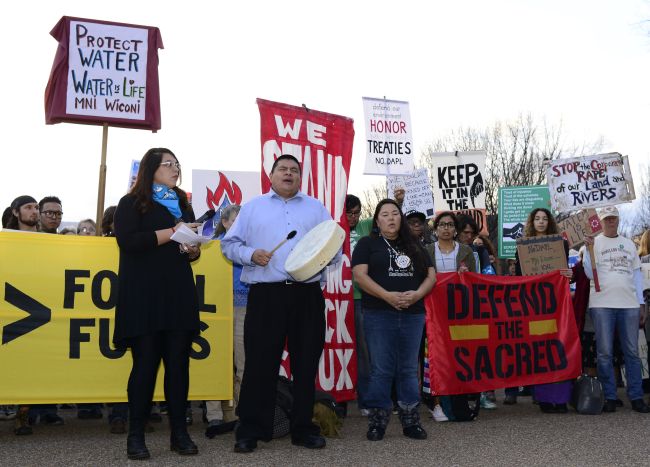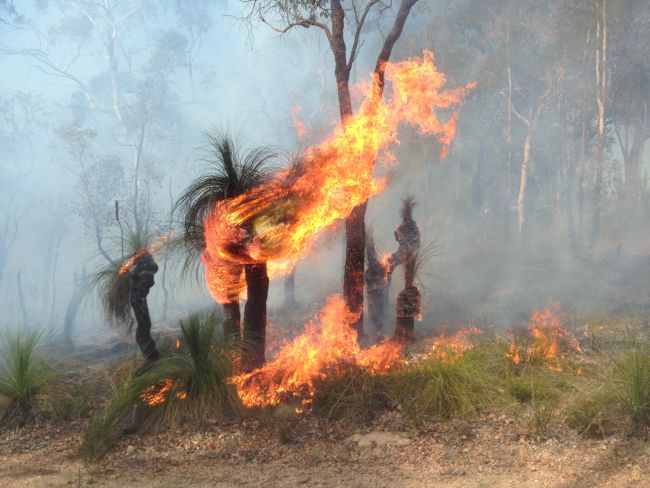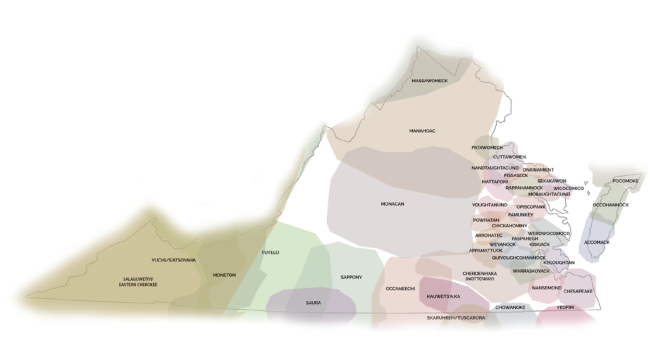
The fight for sustainability is often framed as a new movement that has emerged in the last century. However, Indigenous people have implemented practices like sustainable land stewardship for centuries. Learn how their environmental framework is invaluable to today's sustainability movement.
Environmental justice has become a huge buzzword in the sustainability community - the term highlights the need for environmental policies, benefits, and burdens to be experienced justly. Historically, people of color and lower socioeconomic status in the United States have felt the negative effects of environmental events at a disproportionate rate.
Instances like the Flint Water Crisis, Louisiana's “Cancer Alley,” the Dakota Access Pipeline, or the Atlantic Coast Pipeline (that was set to house a compressor station in the middle of historically Black neighborhood Union Hill, just 50 miles south of Charlottesville), have taught the public that many parts of our political, economic, and infrastructure systems are not only not protecting our environment enough, but are also harming historically disadvantaged communities even more.
While the success of the fight against the Atlantic Coast Pipeline shows that environmental justice matters, and local voices have power, it seems as though the communities who have done the least amount of damage are suffering the most. Native American nations across the country have stewarded this land for centuries, and their knowledge is invaluable for approaching a solution to our environmental problems, yet they suffer at the hands of companies trying to exploit their land's natural resources like those involved with the Dakota Access Pipeline.
Learn about some of the key ways Indigenous knowledge is critical to a truly just environmental movement and how it can help reframe how we approach the fight for sustainability.
- The Red Deal, a complement to the Green New Deal, calls for “action beyond the scope of the US colonial state. It’s a “program for Indigenous liberation, life, and land—an affirmation that colonialism and capitalism must be overturned for this planet to be habitable for human and other-than-human relatives to live dignified lives.”
- Indigenous science is similar to Western science in the pursuit for knowledge, but the approach is more holistic and observation-based rather than compartmentalized or reductionist. What’s known as “Traditional Ecological Knowledge” (TEK), highlights the way Indigenous peoples have managed their lands for thousands of years. Dina Gilio-Whitaker from the Colville Confederated Tribes shares an example of this.
"When the Spanish first came to California, they wrote about how there were times of the year when fires were burning everywhere. Native people lit these fires intentionally as a way of managing forests. Now we hear about these radical fires in California due to climate change. Perhaps if settlers hadn't spent a century mismanaging forests, then the conditions wouldn't be so badly exacerbated by climate change. there is all this underbrush that's drying out because of climate change, but which provides the fuel for these massive fires. Had the forests not been mismanaged for over a century, then we wouldn't have the conditions that head to these extreme fires. We'd still have drying, but not the ground brush that fuels these fires. The Indigenous people had this forest management practice, and it makes sense that when you thin the planet population out, it's less competition for the water, which allows water to accumulate. But Western scientists have only found that out now, while Indigenous people have practiced this for centuries."
Returning land back to Indigenous tribes can save environmentally degraded land. For instance, the Menominee were terminated as a federally recognized nation during the 1950s, but they fought back and got their reservation restored. Now, they manage their forests in such an ecologically sound way that you can see the outline of their reservation from space.
Native American tribes take a collective, community-driven approach to living. For example, Thunder Valley, an organization of various Sioux tribes, leads a number of initiatives “only through a whole community approach,” and with their core values of honesty, compassion, respect, humility, generosity, and wisdom.
One of their initiatives, the Regenerative Community Development Initiative, focuses on healing humans’ relationship with the earth by “ensuring that the physical spaces where our liberation and healing occur meet our community’s vision for a healthy, innovative, and culturally-appropriate built environment rooted in our Lakota way of life.” Ultimately, they are working towards building a community of net-zero buildings and energy systems by both prioritizing the implementation of renewable energy and leading community design workshops, project planning, and construction project management.
Continue to learn! Check out these podcasts by Indigenous people:
- 2 Crees In a Pod creates a space for Indigenous resurgence and honors Indigenous helping practices: Spotify | Apple
- All My Relations explores Indigenous relationships to land, creatural relatives, and to one another: Spotify | Google Play
Taking Action
Here are some ideas for ways you can deepen your understanding of these issues and connect with Native American communities.
Research the history of the Indigenous people who stewarded the land you live on now by visiting https://native-land.ca/. In Charlottesville, the Monacan and Manahoac people originally stewarded and cultivated the land through a close relationship with the earth and by encouraging the healthy production of plant populations through different techniques.
Start to “un-erase” Indigenous people in all your work. This can simply mean considering Native people and their knowledge in your respective discipline. Learn the history of their accomplishments in your field and the work Native people still do today. According to Gilio-Whitaker, un-erasing Indigenous people “begins with settler institutions (including science-based institutions) engaging Indigenous people in all their conversations, and the recognition of cultural and political sovereignty.”
On Grounds, check out these organizations:
- The Native American Student Union (@nasuuva) to stay up to date on issues affecting Native students
- The Environmental Justice Collective (@ejcatuva), which centers the voices of people of color through a collective-based approach to environmental work.
Donate to organizations funding Indigenous collective work:
- Seeding Sovereignty works to “radicalize and disrupt colonized spaces through land, body, and food sovereignty work, community building, and cultural preservation.” Donate here.
- The Monacan Indian Nation in the Charlottesville area, funds various initiatives including the Elders Program, a Food Bank, programs for the youth, and a museum dedicated to persevering their culture. Contribute by becoming a museum member here.
- Thunder Valley Community Development Corporation, a holistic organization, works for the liberation of the Lakota people. Donate to one of their current initiatives here.
- National Indigenous Women’s Resource Center provides national leadership to end violence against American Indian, Alaska Native, and Native Hawaiian women by “lifting up the collective voices of grassroots advocates and offering culturally grounded resources, technical assistance training, and policy development to strengthen tribal sovereignty.” Donate here.
- Indigenous Mutual Aid is an information and support network that inspires and empowers autonomous Indigenous relief organizations in response to COVID-19. Donate here.

Rebecca Geiger is a third year at UVA studying Architecture and minoring in Global Sustainability and American Sign Language + Deaf Culture. She works in the UVA Office for Sustainability with the Service Learning team, and is passionate about increasing equity, accessibility, and sustainability in the built environment. Around Grounds, she is involved with organizations such as Dressember at UVA and Outdoors Club, is a Student Ambassador for the School of Architecture, and serves on the Diversity, Equity, and Inclusion committee for her sorority.



